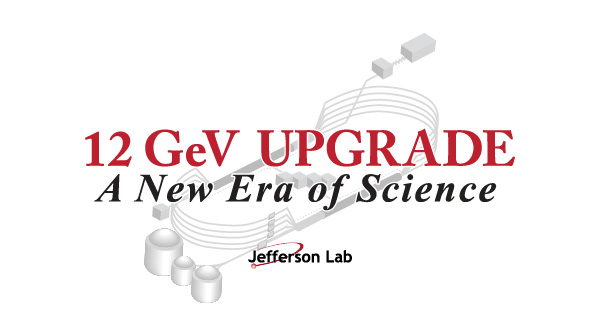Thomas Jefferson National Accelerator Facility, or JLab, is the youngest of the seventeen Department of Energy National Labs, but its youth in comparison to other labs does not mean its short history is not as exciting. From the beginning, Jefferson Lab's staff and leadership took bold steps to accomplish its mission of conducting world-class nuclear physics experiments to answer the puzzling question of what makes up matter.
The Continuous Electron Beam Accelerator Facility (CEBAF) started its experimental program in 1995 with three end stations (Halls A, B, and C) and an electron accelerator with a design energy of 4 GeV. In August 2000, the accelerator delivered 6.07 GeV (billion electron volts), 150% of the original CEBAF energy.
In 2004, DOE recognized the mission critical need to upgrade the accelerator to 12 GeV, and in 2006, project engineering and design efforts began. In 2008, construction began on the $338 million project.
On April 14, 2009, the current and two previous laboratory directors, along with a plethora of local, state, and national elected officials, attended the groundbreaking ceremony for the fourth experimental end station, Hall D. Pictured above are: Christoph Leemann (JLAB Director 2000-2006), Hugh Montgomery (JLAB Director 2006-2017), and Hermann Grunder (CEBAF/JLAB Director 1985-2000).
Finally, in September 2017, Jefferson Lab received official notification from DOE of the formal approval of the project's completion and to start operations. By spring 2018, all four experimental end stations were successfully receiving beam and performing experiments.
On Wednesday, May 2, 2018, the CEBAF 12 GeV Upgrade Dedication Ceremony took place, featuring keynote speaker Paul Dabbar, Under Secretary of Energy, as well as numerous local, state, and national elected and appointed officials.



